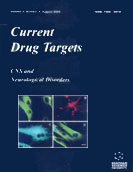Abstract
Endocannabinoid circuits have been shown to regulate a number of important pathways including pain, feeding, memory and motor coordination. Direct manipulation of endocannabinoid tone, therefore, may relieve disease symptoms related to analgesia, obesity, Alzheimers and Parkinsons in humans. The endocannabinoid circuit involves two cloned receptors: CB1 in the CNS and CB2 in the periphery; endogenously produced ligands including anandamide, 2-arachidonylglycerol and palmitoylethanolamide; and enzymes that degrade endocannabinoid ligands to terminate signaling. Currently, three enzymes have been characterized with the ability to hydrolyze endocannabinoids: fatty acid amide hydrolase (FAAH), monoglyceride lipase (MGL) and N-acylethanolamine-hydrolyzing acid amidase (NAAA). The purpose of this review is to examine the molecular biology for the enzymes that hydrolyze endocannabinoids covering the protein activity and expression, mRNA characterization, genomic locus organization, promoter analysis and knockout phenotypes.
Keywords: Endocannabinoid, cannabinoid receptor, fatty acid amide hydrolase, monoglyceride lipase, N-acylethanolaminehydrolyzing acid amidase, central nervous system, knockout mouse, review
 6
6

















